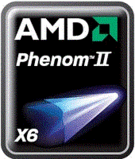I found this article interesting.
Unified EFI Forum - Wikipedia, the free encyclopedia
UEFI - Home
UEFI - About UEFI
Unified EFI Forum - Wikipedia, the free encyclopedia
UEFI - Home
UEFI - About UEFI




 Interesting especially the OS support of GPT table. If FREEBSD and Linux (even X86) support "Boot from GPT on PC/BIOS" Microsoft will need to be finding a way soon.
Interesting especially the OS support of GPT table. If FREEBSD and Linux (even X86) support "Boot from GPT on PC/BIOS" Microsoft will need to be finding a way soon.


Comment